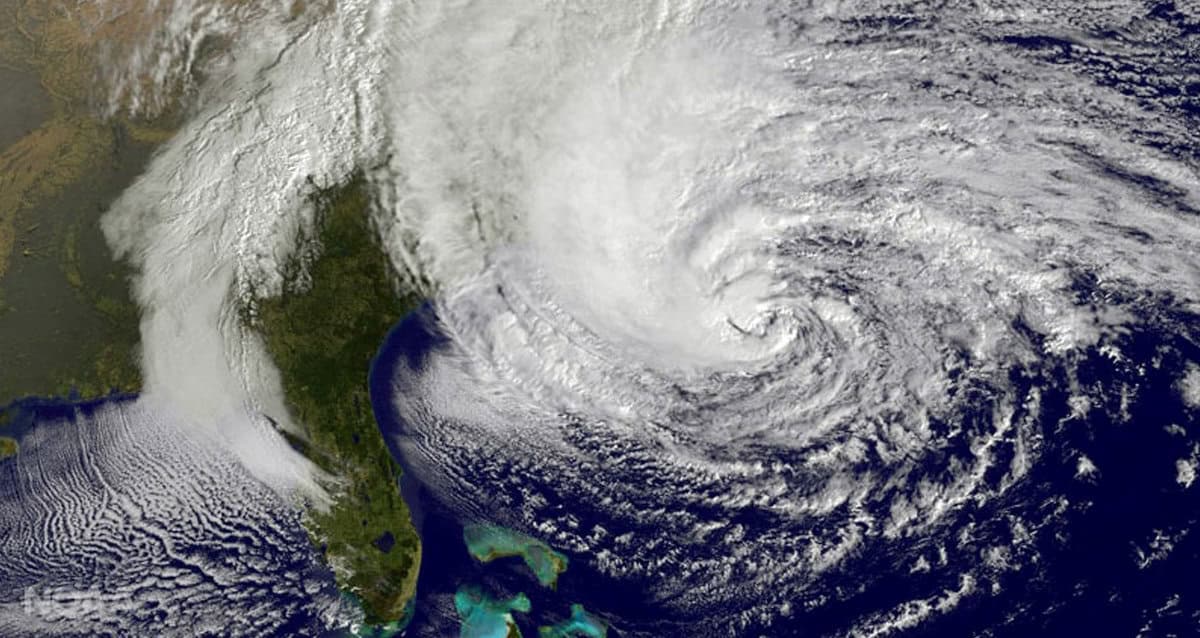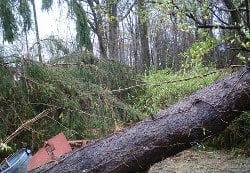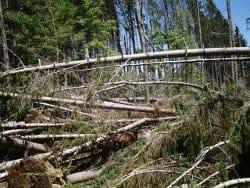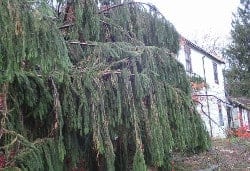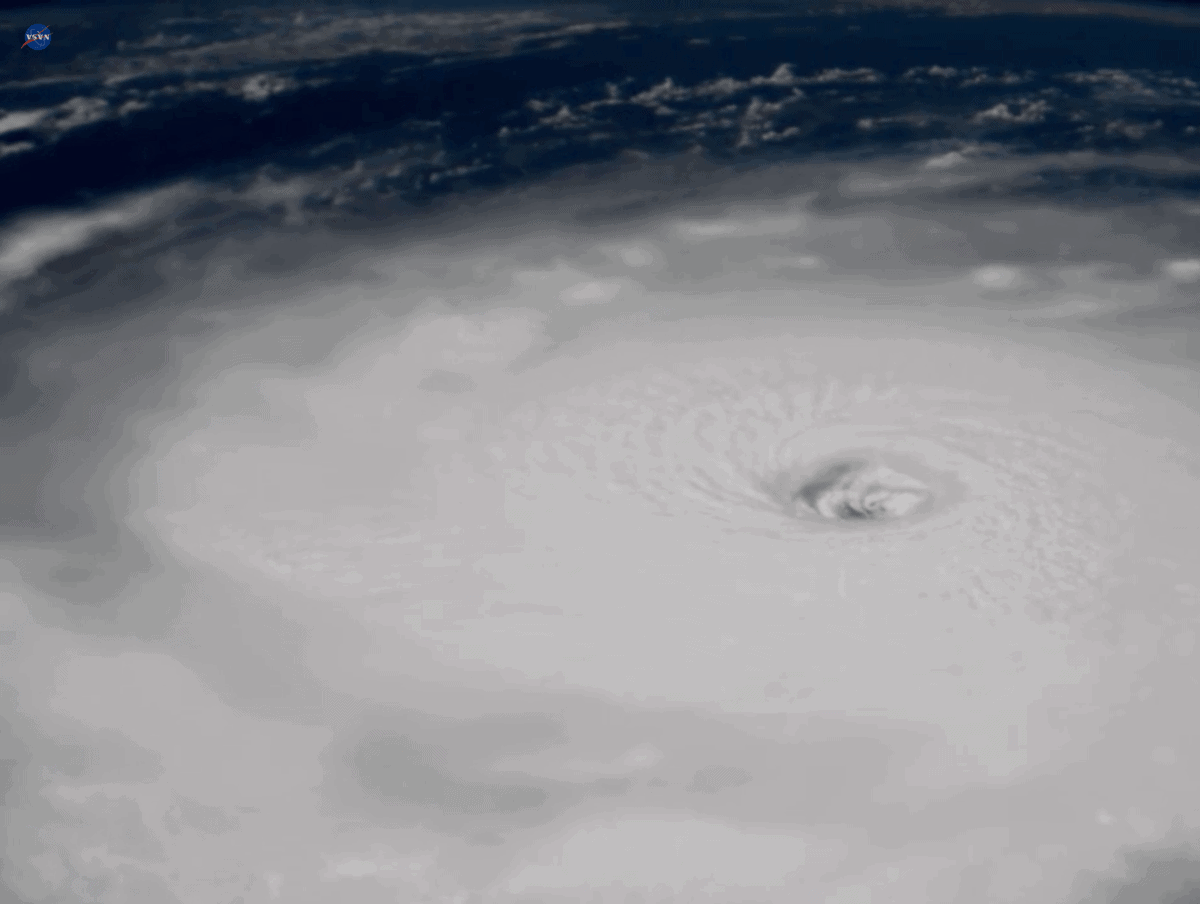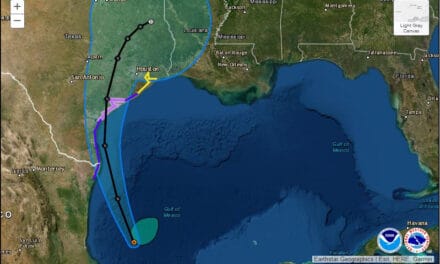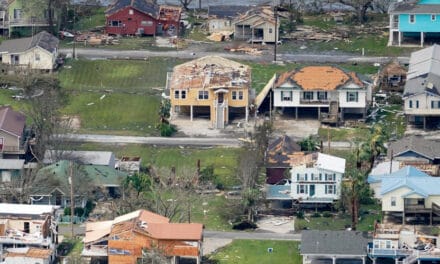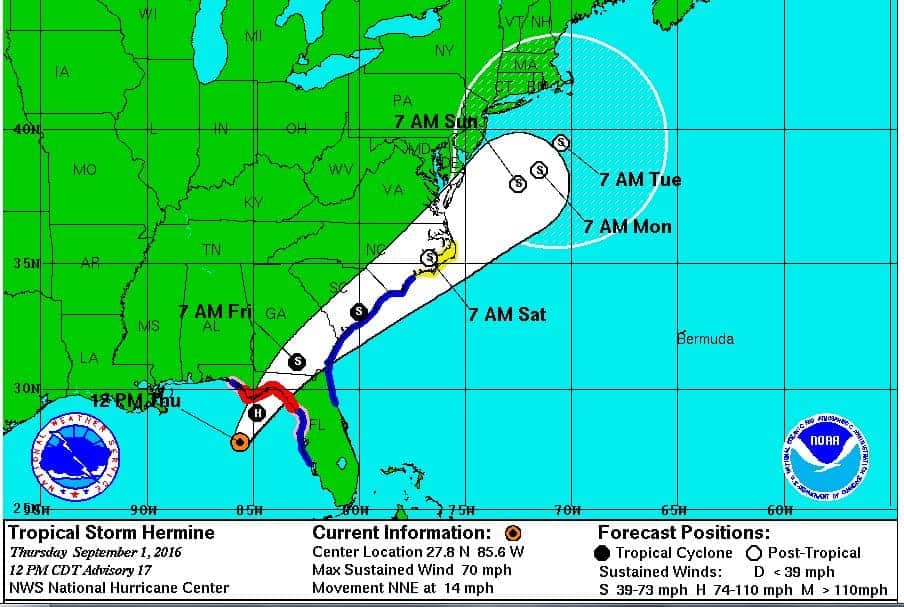Coastal regions usually garner all the attention before, during, and after a hurricane. When hurricanes like Sandy roll up the coastline and finally turn inland, they bring destruction all along the shore and often for miles inland. Near the time it made landfall, Sandy became an extra-tropical storm, combined with another storm system, and impacted weather and lives all the way to Wisconsin where gale warnings were issued for Lake Michigan.
West Milford, a township in Passaic County New Jersey that covers about 80 square miles of mainly forested land, is about 140 miles straight north of Atlantic City and just 40 miles east of the Long Island Sound. Sandy roared inland with tropical storm force winds and torrential rains, and spawned tornadoes and micro-bursts that flattened acres of forested land.
Wreaking Havoc
Bob MacGregor lives in West Milford on a three acres of property and shared some of his experiences with Super Storm Sandy.
During the night of the 29th of October, Sandy roared through the town like a runaway freight train, stripping roofs, blowing out windows, breaking off branches and re-locating outdoor furniture and decorations. The power of the storm was awe inspiring.
With the wind came a torrential downpour and as the soil lost its ability to grip the shallow roots of pine and ash, the trees began to fall. At first, one or two toppled, then dozens, and then hundreds. In several places, including one stretch of reservoir-owned property bordering the town’s main road, entire thickly-wooded acres were smashed flat as if under the boot of an enraged Titan.
With the trees went power, hard wired internet, and cable, the lines severed in hundreds of places. The roads themselves were blocked by trees. Emergency crews moved with the aid of teams of chain saw operators who had to cut a path in and another out as more trees fell.
And the town went black. Here and there portable generators sputtered to life as the better prepared citizens initiated their
emergency routines, but generators proved to be thin on the ground. A few lucky ones, those with a clear road to a supplier that was open and had a few generators in stock, were able to power up. But even for them the supply of fuel to run the equipment was problematic and would remain so for weeks as road travel remained extensively curtailed.
With no refrigeration, residents began bagging the contents of their freezers and fridges and storing them in garages―until trash collection could be resumed.
Lessons Learned
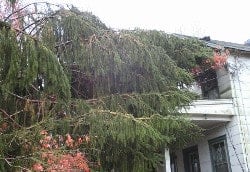
When I went outside to see what had bounced off the house I was nearly blown flat. Scared me speechless, to tell the truth.
West Milford’s location is unique within the state of New Jersey, and access is limited to forested county and township roads, which made clearing a path to provide much needed help difficult. Eventually, crews from as far away as Ohio and Virginia arrived to help get the power back on and rebuild the devastated electrical grid throughout the county. Most of the township went dark on the night of 29 October, and it was three weeks before all residents had their power restored.
Trees fell next to, but not on Bob’s house, though he had several near misses. When I went outside to see what had bounced off the house I was nearly blown flat. Scared me speechless, to tell the truth.
Bob also talked about the future and what he and the people of West Milford have learned, in particular about being prepared for disasters of any kind.
Sandy was bad for the Township of West Milford, but even that mighty storm is not the very worst that could happen. Disaster can come from all directions and in a wink of an eye. For many residents of the town it was a teachable moment; preparation is the key. A full tank of gas in the car when one gets home at night and perhaps 10 gallons extra in cans, a supply of foods that do not require extensive preparation or refrigeration, bottled water, and most of all a generator with plenty of fuel on hand.
As the West Milford cleanup continues more then six months after Sandy, people like Bob are getting ready for the next time it happens, with new standby and portable generator installations, stores of food, fuel, and water, and plenty of gas for their chainsaws.
Photos by Bob MacGregor

